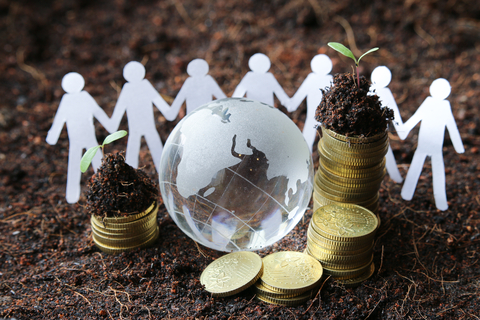
The word “sustainability” and “circular economy” have quickly become buzzwords in our industry, but what do they really mean to you and your company? With most major corporations touting their lofty sustainable goals, it seems to mean something a little different to everyone. In fact, recently the oil giant Shell has caused controversy regarding its sustainability goals and has been accused of “greenwashing” their business as more environmentally friendly than it really is.
In order to avoid a misstep in sustainability, it’s important to understand what is really meant by the term and to align your company goals in a way that makes sense for your business. The term first became popularized in 1987 by the Brundtland report, a publication released by the World Commission on Environment and Development (WCED). Many people tend to think of only environmental sustainability when the word is used, but nowadays sustainability is commonly defined by three main pillars: economic viability, social equity, and environmental conservation.
Two of the pillars seem inherently easier to manage from a business standpoint than the third. Economic viability has to do with the profitability of your business while still maintaining the practices instated for the other two pillars. As long as you have a buy-in from the upper management of the company and compliance checkpoints in place, most businesses do well in this area.
The social pillar dictates that a sustainable business should offer equal opportunities to all, engage positively in their communities, and foster a safe working environment. Do you have written policies in place for these things? If not, it might be a good idea to spend some time and flesh out what your company is already doing in these area. Things like supporting professional development opportunities, offering flexible scheduling to care for families, engaging with your stakeholders, or contributing to local charities or scholarships might fall under this pillar.
The environmental pillar is where things sometimes get dicey for companies. It may be tempting to make broad and sweeping goals for environmental sustainability, but things in this realm are often more complex than it seems. Reducing your carbon footprint seems simplistic on the surface, but are the changes being made to achieve this really as environmentally friendly as they initially seem? Take electric vehicles for example, while they might result reduce emissions while operating, what is the carbon footprint involved with manufacturing them? When it comes to freight, if the nation were to convert all trucks to EVs, we would require about twice as many trucks on the road due to the reduced distances the EVs can travel which would further burden an industry already short on truck drivers. Not only that, but production of EV batteries requires metals such as lithium, nickel, cobalt, manganese, and aluminum. To convert all our fleets would require the consumption of all the metals we have available for years, and this will lead to an increase in mining.
So, what does this mean for a company who is just trying to be more environmentally sustainable? It’s important to keep the big picture in mind and not just make changes for the sake of making changes without first analyzing their impact. Even little changes can make an impact, so it might be better for your company to start small with its sustainability goals and then build from there. Can you do more to promote collecting recyclables in your company, or reduce unnecessary packing waste? Can you limit unnecessary business travels by plane? What about promoting reusable items for employees in the breakroom instead of disposable cutlery and plates? By taking a series of small steps, businesses can still make a significant contribution to environmental sustainability.
